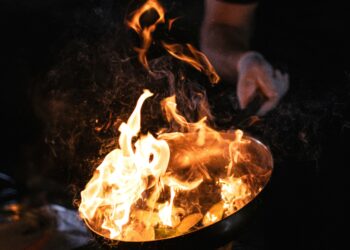By Kate Battaglia EBS CONTRIBUTOR
BIG SKY – In March, Nathan Browne set out on a float trip on the Smith River west of Helena, not knowing where his passion might take him. Browne, an avid fisherman and a senior at Lone Peak High School, was accompanied by his father and members of the conservation group Trout Unlimited on the trip.
Browne was inspired by TU’s conservation efforts, involving the preservation of aquatic environments within rivers. TU members on the float trip later placed him in contact with the group’s Project Manager Jeff Dunn. Together Browne and Dunn crafted a service project allowing Big Sky community members to actively help aid in the preservation of aquatic ecosystems within Montana, specifically looking at fish and culverts, tunnels that carry river water under roads or bridges. This is where my journey with Browne and Trout Unlimited began.
Over the summer, I’ve sought out local community service opportunities to participate in. When I was presented with the offer to take part in Browne’s culvert-restoration project, I was overwhelmed with excitement. This project granted us the unique opportunity to assess fish passage in 30 culverts on rivers throughout Big Sky.
Our mission was simple: “Helping point out problematic culverts,” Browne said. “… The Trout Unlimited group can work to replace questionable culverts that would infringe on fish passage.”
After Browne and Dunn created an online field map specifically used to assess culverts, Dunn provided a short survey on the app Survey123 that we used to record the measurements and other data observed at various culverts.
The ArcGIS map Dunn provided allowed Browne and I to locate culverts hidden along winding roads or concealed by thick shrubbery. Once we located a culvert or bridge, we loaded the required data into the survey app. The app then scored the culvert on a 20-point scale, either rating it as “good,” “questionable” or a “possible barrier.” The culverts scoring either “questionable” or “possible barriers” on the survey will be further assessed and, if needed, rehabilitated by TU.
Throughout the course of the project, beginning July 22 and concluding Aug. 4, Browne and I began to notice distinct patterns in the quality of the culverts. Our measurements began with culverts around Big Sky Town Center, where the majority ranged in quality from “good” to “questionable.” We rarely faced any dilapidated culverts, making the measurement process simpler and more efficient.
After completing measurements in Town Center, we visited the Big Sky Base Area where our results varied greatly. The majority of the culverts we measured in the base area were classified as “questionable” or “possible barriers.”
“It was interesting to see the different qualities that make culverts problematic for fish passage,” Browne said. “It’s not just one issue.”
Over the past 20 years, TU has crafted various restoration programs and other projects regarding the preservation of the aquatic environment within streambeds. They have built partnerships and collaborated with many members of the agricultural community, discovering innovative ways to irrigate farmland without the use of environmentally disruptive structures such as dams. Similar to dams, the project Browne and I took part in gauged whether trout passage is aided or disrupted by the culverts we assessed.
Culverts have allowed the human population and stream-bed marine life—such as trout found within the nearby rivers—to coexist without any disruption. If the great sum of culverts we assessed were not built, many of the beloved activities and hobbies many Montanans hold dear, including fly fishing, would be changed for the worse.
From our observations so far, Browne and I won’t need to record data any further data on the culverts. But questions, including “Will this project expand to other regions of Montana?” remain unanswered at this point. My hope is that I will be able to continue participating in similar projects with TU and help to preserve the natural environment within Montana.
The knowledge I have acquired from this experience not only lies in the beneficial effects of culverts but the overarching reason why the Big Sky ecosystem is so unique. Over the course of many years, this community has developed an unparalleled bond with its surrounding environment, allowing for both its human and animal inhabitants to exist coherently, benefiting from one another. I hope we can continue to coexist.
Kate Battaglia is a sophomore at the Episcopal School of Dallas, who, despite residing in a different state, is an active member of the Big Sky Community. She is also an aspiring journalist who enjoys writing about her unique experiences within the state of Montana.














